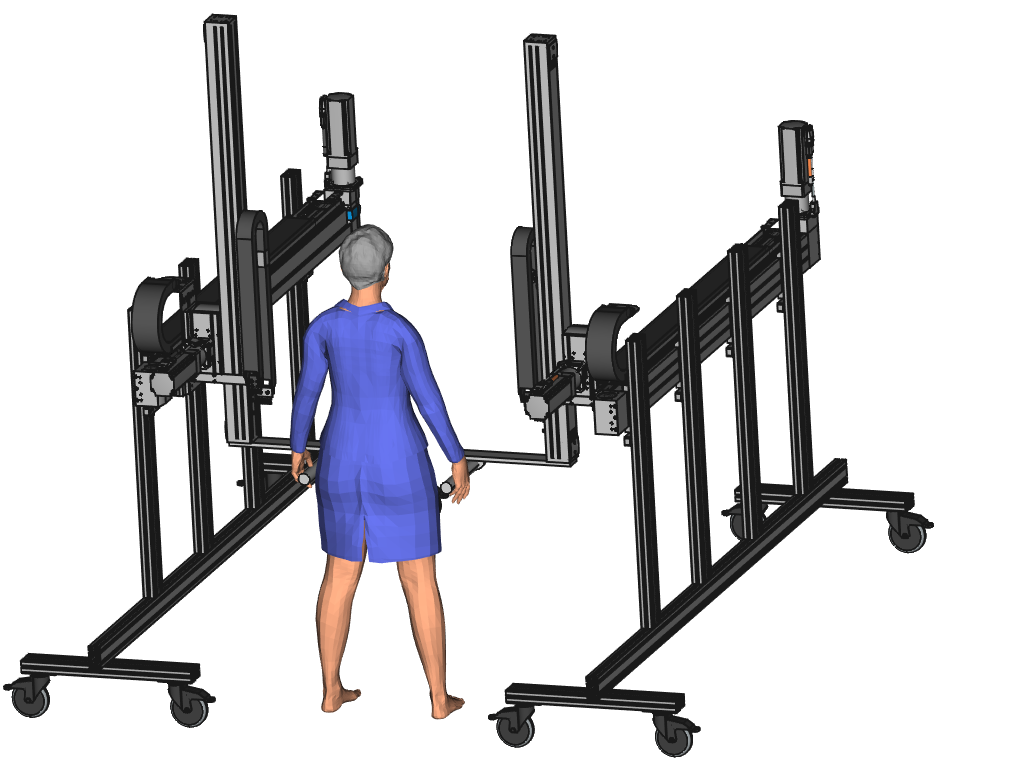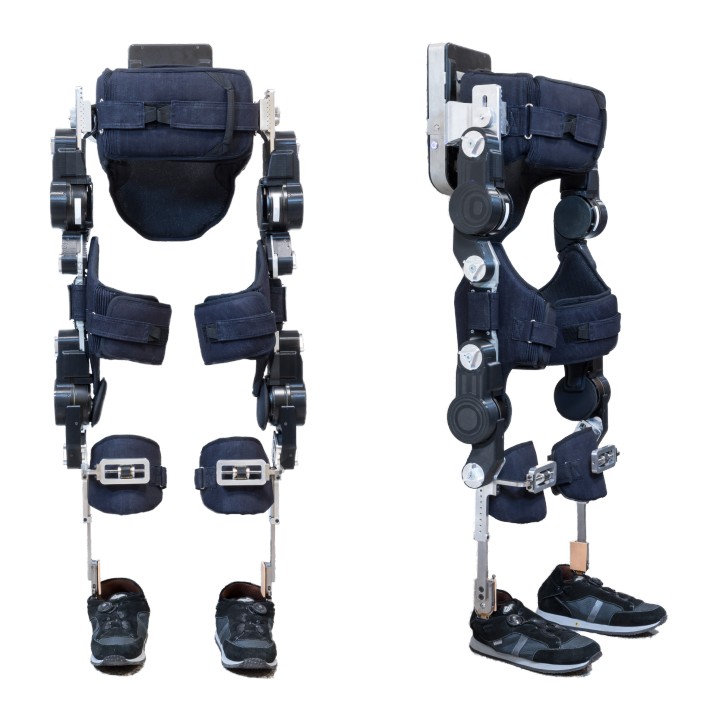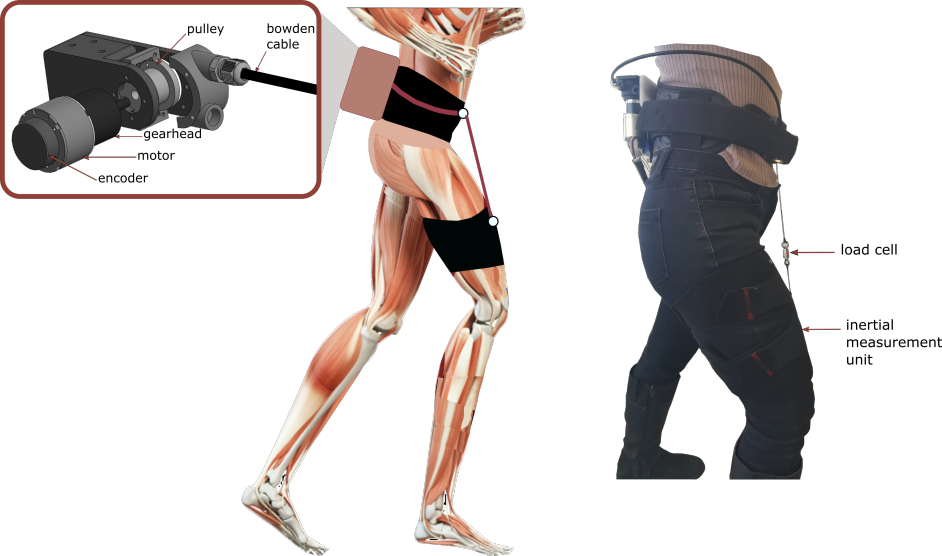The main goal of the HeiAge project is to develop and validate new, intelligent devices to maintain and improve mobility in older adults. As older adults are a heterogeneous group, we aim to develop different devices that address the varying needs of older adults of different frailty or ability levels. Therefore, the subprojects B1, B2 and B3 aim to develop an assistive robot, exoskeleton and ExoSuit Light to support older adults ranging from more needs to less supportive needs: assisting with getting up from a chair, walking and partial assistance to maintain an active lifestyle.
Assistive robot
One of the first motions that are getting difficult to do with declining strength is the ability to stand up without assistance. The strain that is put on the leg muscles during sit-to-stand (STS) transfer is very high. Walking and standing are comparably easier. To preserve everyday mobility of older adults who have difficulties standing up, this subproject (B1: “Development of a mobility assistance robot for older adults”) aims to develop a mobile assistance device that can provide STS support, walking support and also balancing aid.
To achieve this, a protoype of a robotic walker – or robotic rollator – is designed. The main functionality comes from movable handles that will support standing up. In a sitting position, the user can lean on the handles, located on the left and right side next to the body, with stretched arms. Actuators deliver a supporting force to take significant load off the legs by supporting the arms. The exact movement of the handles will be calculated with optimization modeling methods to achieve a motion as natural as possible. The assisted STS motion will be evaluated in motion capture experiments together with other subprojects (eg. A1 & A2).
As a first step an experimental stationary device is built for the handles. This robotic test bench allows us to test many different handle trajectories and evaluate the support motion and forces experimentally. The handles will move in both the horizontal and vertical direction. For the test bench a linear gantry robot will be used, equipped with strong electrical motors and sturdy axes to carry the high mechanical loads and torques needed to provide sufficient support. The picture shows a very early design draft without any mechanical validity or accurate dimensions.

Exoskeleton
In this sub-project (B2: “Adaptation of an exoskeleton for older adults persons”), we aim to adjust an already existing lower limb exoskeleton, in order to comply and optimally support the gait of the older adults population. We specifically hope to support older adults that are more frail and have a lowered ability to walk. To this extent, we have purchased the TWIN exoskeleton, produced under research purposes at the INAIL group of the IIT institute. The TWIN exoskeleton is a personal device that allows spinal cord injury patients to walk autonomously, through a design approach that emphasizes ease of use, wearability and transportability of the exoskeleton. In our project, we have set a two-fold objective:
First, to adjust the exoskeleton hardware to the needs of mentioned group of older adults. This includes examining possibilities of integrating ergonomic and comfort-optimized contact interfaces. In addition, we aim to extend the range of motion of the exoskeleton by introducing support and flexibility in specific degrees of freedom that are restricted with the current version.
The second objective is to adjust the exoskeleton software and implement a model predictive control strategy. For this, we need to redesign the high level control for the operation of the exoskeleton. We particularly aim for better human-robot interaction, where the user has intuitive control of the device through motion intention detection. In addition, we need to develop and implement model predictive control algorithms. This entails the state estimation of the human and additionally the exoskeleton through optimization-based approaches. This will allow us to solve optimal control problems for control signals from sensors both incorporated in the exoskeleton and placed on the human.

ExoLight
The Hip Exosuit is a soft wearable device that can actively assist movement around the hip. This device is being developed by Prof. Masia’s ARIES research group at Heidelberg University as part of the subproject B3 (“Exosuit Light for performing sports up to a high age”). The ExoLight device is targeted towards the older adults that are managing well (Frailty levels: 1-3). The objective is to encourage the users to maintain their physical activity as they age, by making it easier for them to walk and do sports. The device being developed assists hip flexion, which is lifting of the leg, during the swing phase of walking. This way we aim to increase stride length and decrease metabolic energy costs and thus enable more efficient walking.
The Exosuit consists of a belt and two thigh braces, one on each leg. A bowden cable with anchor points at the waist belt and the thigh brace transmits the necessary forces to the leg. The system is designed to be lightweight and transparent, to be ultimately worn outside. The controller will be designed to recognize user intent while its bio-inspired control allows it to follow the user’s movement and provide assistance during the swing phase to help swing the leg further forward. The assisted walking motion will be evaluated in motion capture experiments during both treadmill and overground walking at different speeds, in collaboration with subproject A1.


